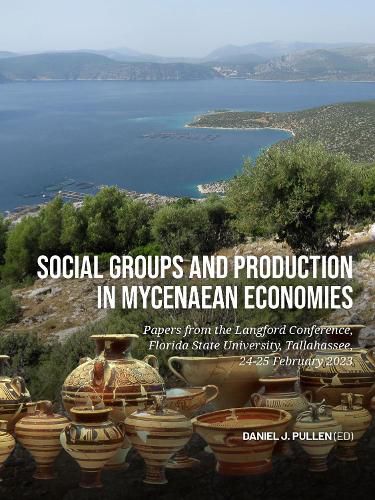Readings Newsletter
Become a Readings Member to make your shopping experience even easier.
Sign in or sign up for free!
You’re not far away from qualifying for FREE standard shipping within Australia
You’ve qualified for FREE standard shipping within Australia
The cart is loading…






The main goal of this volume is to look at social groups involved in economic activity other than members of the palace-based institutions and "elites" in Late Bronze Age Mycenaean Greek societies. The palaces and elites are the usual subject of studies of ancient economies, often from a top-down approach, but here we consider a fuller range of the members of a society, their organization, their institutions, and their contributions to the economies of those societies from bottom-up approaches.
The traditional model of a highly centralized, redistributive based economy controlled by a palace and its officials is no longer viable. Non-palatial components, institutions, and individuals and how those might be organized are increasingly recognized as major components in economic activity in the Mycenaean world. In this volume we examine the various scales and of actors and institutions in Mycenaean economic activities outside palatial control, including the individual, the household, larger groups such as House societies, and markets. The possibility of Firms in the institutional economic sense is also addressed.
In addition to theoretical and methodological chapters, we present several case studies involving craft production, especially of ceramics. The results of these case studies show how economic organization in the Mycenaean world varies greatly in scale, independence of palatial control, and adaption and resilience to change.
The papers in this volume demonstrate that the economy in Mycenaean states was a complex web of institutions, organizations, and actors, and invites closer comparison to the economy in other ancient and archaic states.
$9.00 standard shipping within Australia
FREE standard shipping within Australia for orders over $100.00
Express & International shipping calculated at checkout
The main goal of this volume is to look at social groups involved in economic activity other than members of the palace-based institutions and "elites" in Late Bronze Age Mycenaean Greek societies. The palaces and elites are the usual subject of studies of ancient economies, often from a top-down approach, but here we consider a fuller range of the members of a society, their organization, their institutions, and their contributions to the economies of those societies from bottom-up approaches.
The traditional model of a highly centralized, redistributive based economy controlled by a palace and its officials is no longer viable. Non-palatial components, institutions, and individuals and how those might be organized are increasingly recognized as major components in economic activity in the Mycenaean world. In this volume we examine the various scales and of actors and institutions in Mycenaean economic activities outside palatial control, including the individual, the household, larger groups such as House societies, and markets. The possibility of Firms in the institutional economic sense is also addressed.
In addition to theoretical and methodological chapters, we present several case studies involving craft production, especially of ceramics. The results of these case studies show how economic organization in the Mycenaean world varies greatly in scale, independence of palatial control, and adaption and resilience to change.
The papers in this volume demonstrate that the economy in Mycenaean states was a complex web of institutions, organizations, and actors, and invites closer comparison to the economy in other ancient and archaic states.